11 Rare Novelty Clocks From the 1950s That Turned Into Collectibles
Novelty clocks from the 1950s were more than timekeepers—they were part of the décor. From dancing figures and glowing faces to futuristic designs, these clocks brought personality to kitchens, living rooms, and diners alike. Many of them are now prized collectibles that capture the charm and creativity of mid-century design.
This post may contain affiliate links, which helps keep this content free. Please read our disclosure for more info.
Kit-Cat Klock with Bow Tie
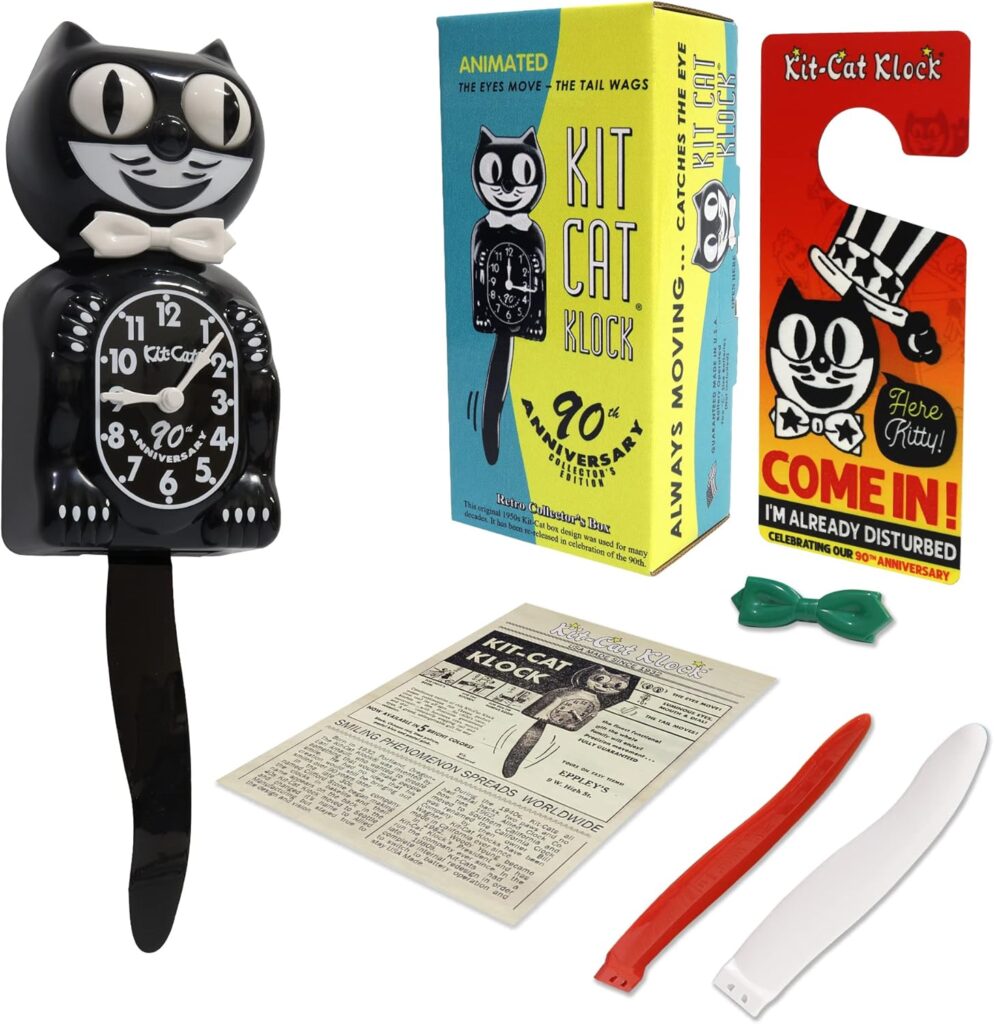
The Kit-Cat Klock became a cheerful symbol of the 1950s kitchen. With its rolling eyes and wagging tail, it added movement and charm to any wall. The addition of the bow tie during this decade gave it a fresh personality that made it stand out. These clocks, produced by the California Clock Company, came in a variety of colors that matched the bright postwar décor of the time.
Collectors treasure original Kit-Cat models for their mechanical movements and glossy finishes. Early versions made of Bakelite are especially sought after, and working examples often fetch high prices. Even modern reproductions still appeal to fans of nostalgic design. Their timeless grin continues to bring a touch of whimsy to vintage collections today.
Mastercrafters “Swinging Girl” Motion Clock
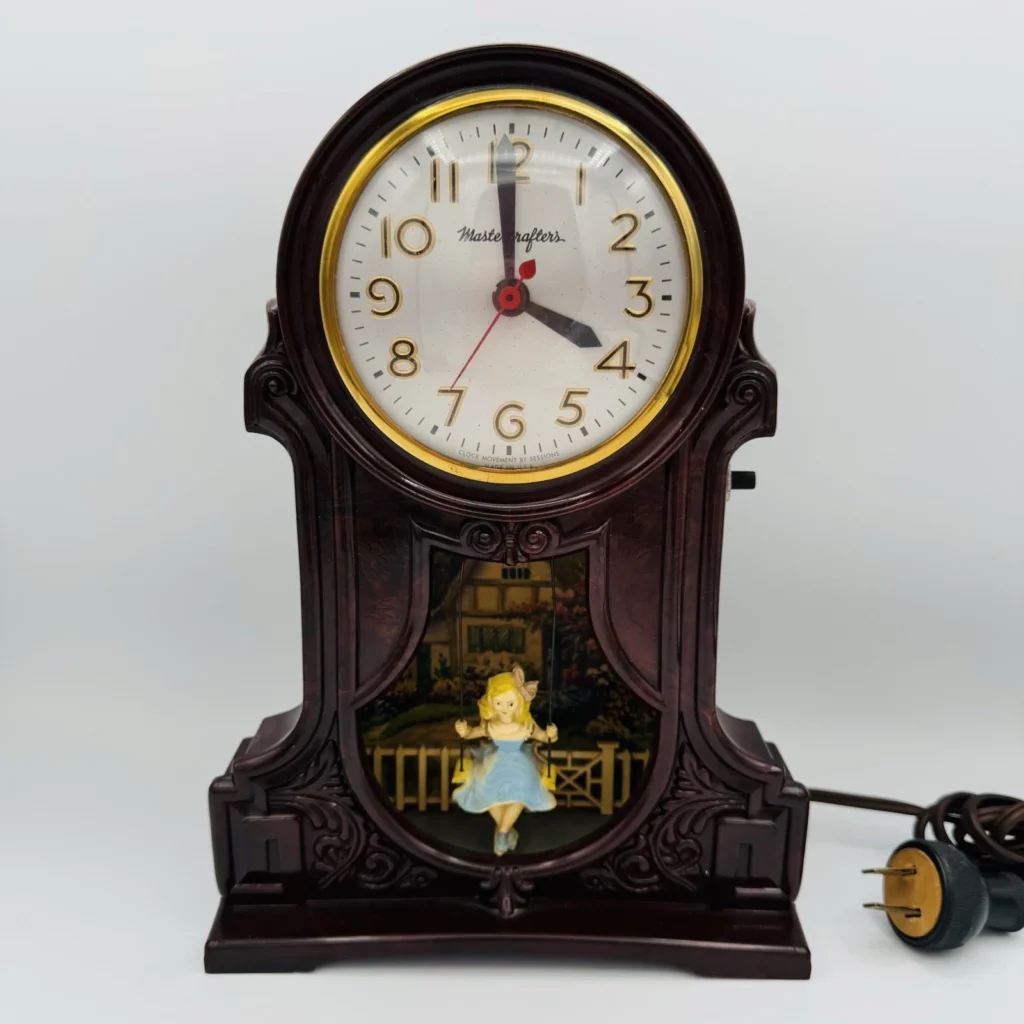
This charming motion clock features a young girl gently swinging beneath the clock face. The illusion of movement gave it a lifelike quality that delighted 1950s homeowners. The design fit perfectly with the decade’s fascination with motion and novelty gadgets. Its brass-toned frame and soft glow made it both playful and elegant.
Collectors love these for their detailed design and animation. Restored pieces can command impressive prices depending on condition and originality. The clock’s mechanism was simple but effective, creating a soothing back-and-forth motion. It remains one of Mastercrafters’ most iconic pieces and a standout example of mid-century novelty art.
Mastercrafters “Waterfall” Motion Clock
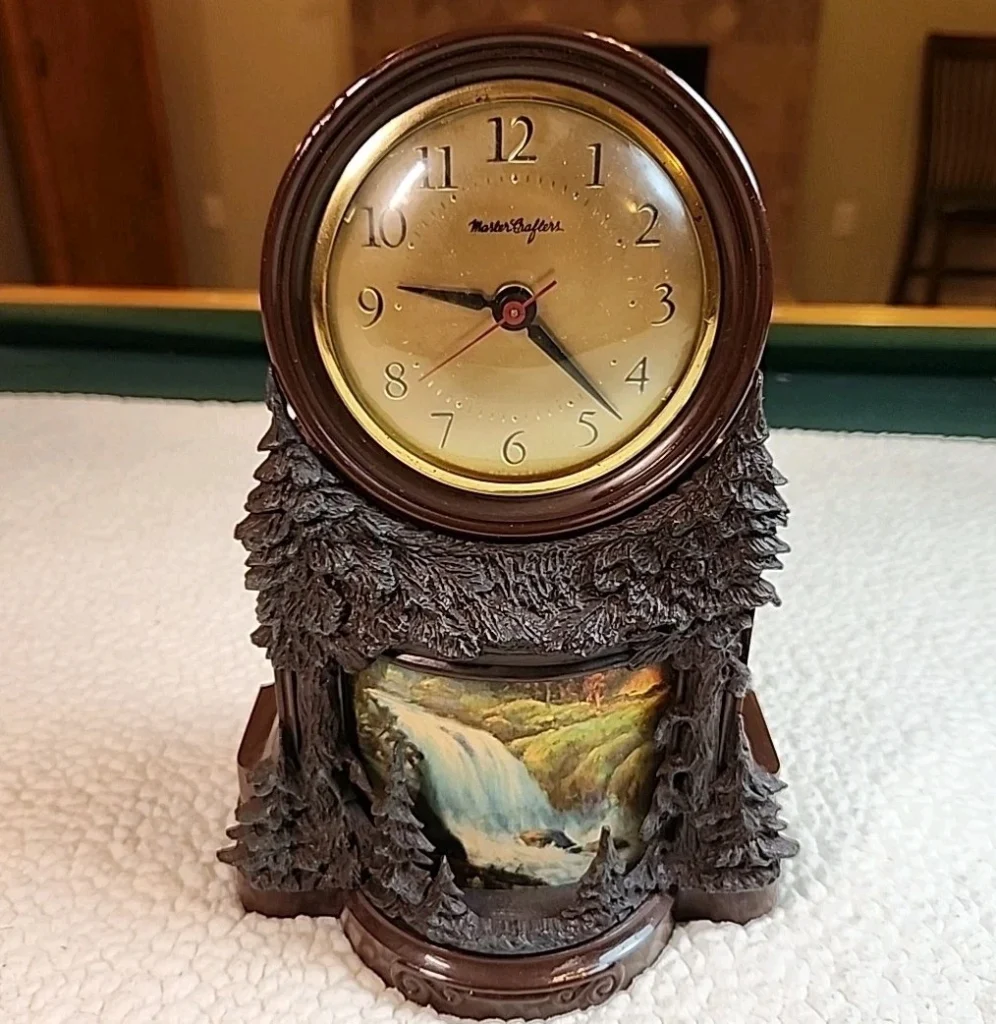
The “Waterfall” model was another Mastercrafters favorite, known for its mesmerizing effect. Behind the clock face, a lit panel created the illusion of a flowing waterfall. It captured the fascination with light and motion that defined many 1950s home gadgets. The combination of warm lighting and graceful animation gave it a calming appeal.
Today, collectors value these clocks for their inventive design and nostalgic charm. Many have been rewired to make the motion function again, which adds to their allure. Original boxes and paperwork can significantly increase their worth. When illuminated, the gentle shimmer of the “Waterfall” clock brings a vintage room to life.
Jefferson “Golden Hour” Mystery Clock

The Jefferson Golden Hour amazed buyers with its floating glass dial and hidden mechanism. The hands appeared to move on their own through invisible gearing inside the rim. Its sleek brass finish and minimalist design fit perfectly with modern 1950s interiors. It looked futuristic at the time and still feels sophisticated today.
Collectors value these clocks for both their design and engineering. The illusion of motion without visible gears makes it a conversation piece. Clean examples with working motors remain in high demand. The Golden Hour represents the blend of art and innovation that defined the decade’s design trends.
George Nelson Ball Clock (Howard Miller)
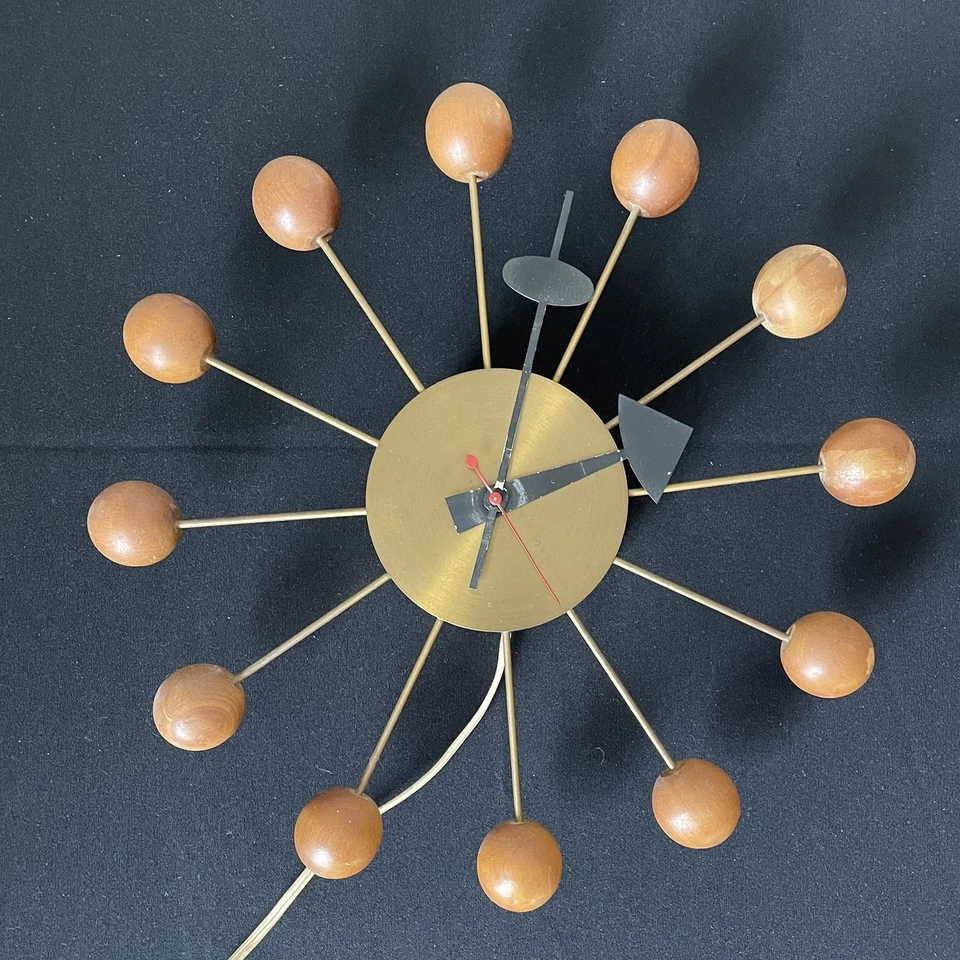
Designed for Howard Miller, this clock became a hallmark of atomic-age design. Its colorful wooden balls radiating from the center reflected optimism and creativity. The Ball Clock wasn’t just functional—it was a sculptural statement piece. It brightened up homes with its cheerful shape and playful form.
Today, authentic 1950s versions command strong collector interest. Many reproductions exist, but originals remain prized for their craftsmanship. The design continues to influence modern décor and mid-century reproductions. Owning one feels like holding a piece of design history from the golden age of American style.
George Nelson Sunburst/Spindle Clock (Howard Miller)
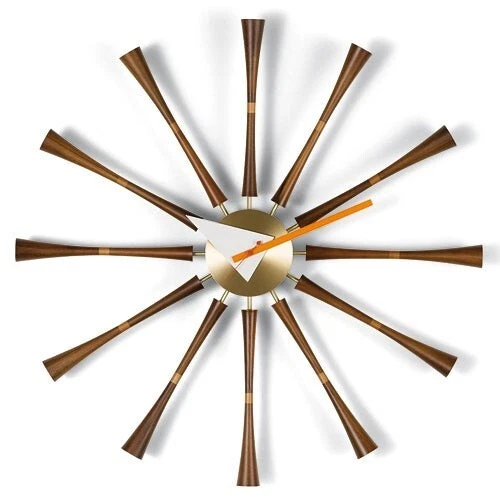
Another Nelson design, the Sunburst Clock featured sharp rays of wood and metal. It reflected the fascination with atomic shapes and space-age imagery. The design added flair to living rooms and offices alike. Its balance of form and function made it an instant mid-century classic.
Collectors seek early examples with original labels and hands. The combination of materials and bold geometry still feels stylish today. Many see it as the defining wall clock of the era. It remains one of the most recognizable designs from the 1950s.
Pam Clock Co. Coca-Cola Backlit Wall Clock
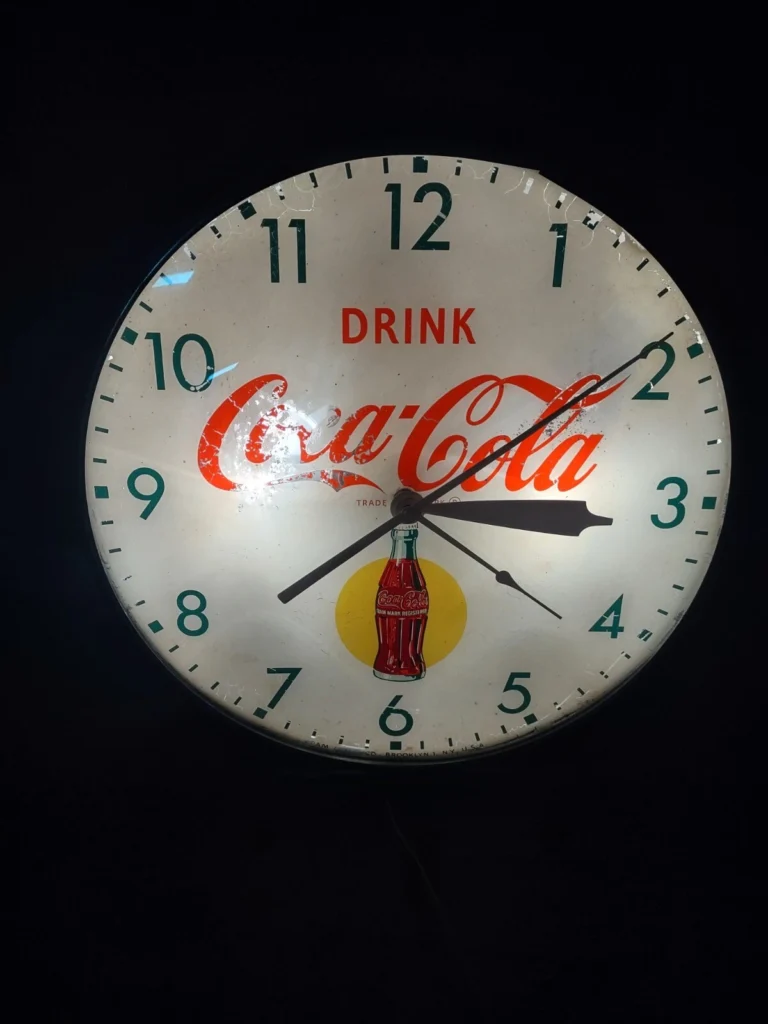
Coca-Cola advertising clocks were everywhere in the 1950s, from diners to corner stores. Produced by Pam Clock Co., these backlit models glowed with soft neon-like light. The clear glass faces and bright logos created an inviting atmosphere. They were both marketing tools and functional décor.
Collectors value authentic Pam clocks with clean glass and working lights. Original Coca-Cola versions are especially popular due to their brand appeal. Many have survived because they were mounted high on walls, away from damage. Restored models still light up collections with nostalgic charm.
Westclox “Moonbeam” Alarm Clock
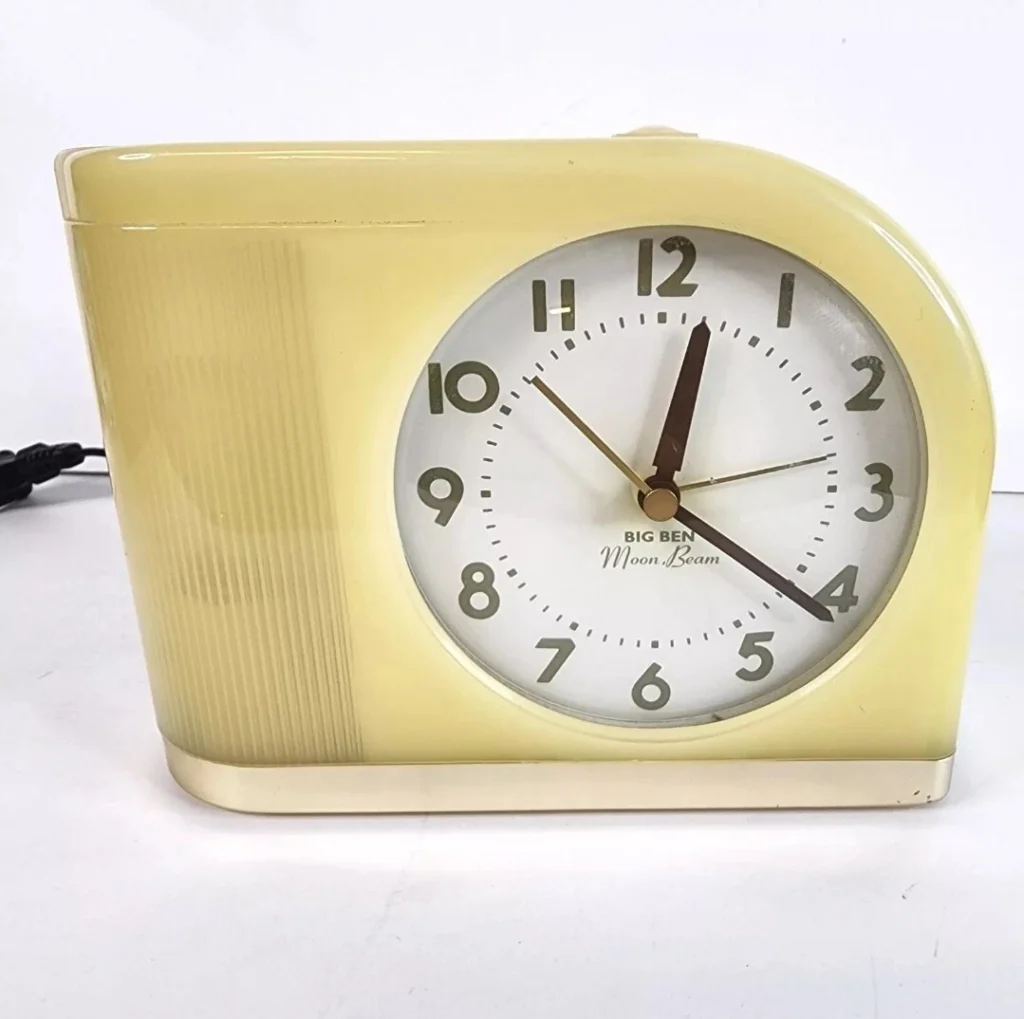
The Westclox Moonbeam used gentle light to wake sleepers instead of a harsh buzzer. A small bulb inside the clock would glow softly before the alarm sounded. Its rounded shape and pastel colors suited 1950s bedroom décor. It became a household favorite for its friendly design and soft illumination.
Collectors look for early versions with cloth cords and metal cases. Restored models still function beautifully with their original light feature. The Moonbeam’s mix of practicality and style makes it a favorite among mid-century fans. It remains one of Westclox’s most charming creations.
Pennwood Numechron Drum-Digital Clock

The Pennwood Numechron introduced an early form of digital timekeeping. Instead of hands, it used rotating numbered drums that flipped as minutes passed. Its streamlined shape fit perfectly on desks and mantels during the 1950s. Many came in ivory or brown Bakelite housings that have aged beautifully.
Collectors love these clocks for their retro-futuristic style. The ticking rotation of the drums gives a quiet rhythm that feels mechanical yet modern. Working units remain desirable, especially those with original electric cords. The Numechron paved the way for digital clocks decades later.
Sessions Starburst Wall Clock

Sessions produced many variations of starburst clocks that reflected atomic-age energy. Their combination of wood, metal, and brass tones gave walls a dynamic look. The geometric shapes symbolized progress and style during the 1950s. These clocks were both decorative and practical.
Collectors admire Sessions designs for their craftsmanship and variety. Many featured contrasting rays or alternating materials. Original hands and movement add to their authenticity. The Sessions starburst remains one of the most recognizable icons of the era.
Kundo 400-Day Glass-Dome Anniversary Clock
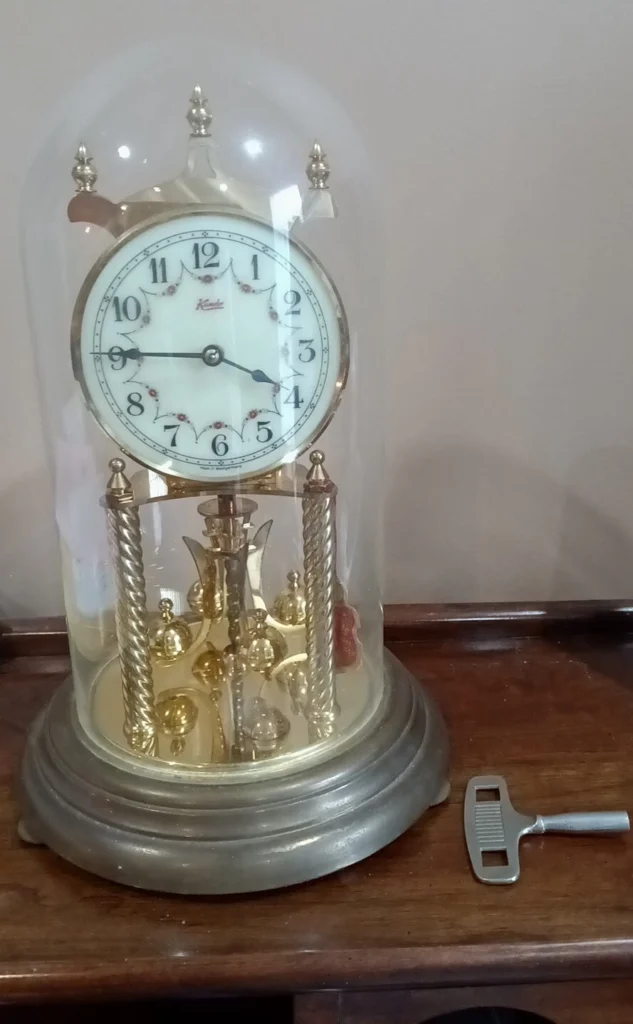
The Kundo anniversary clock was admired for its elegant movement. Its brass base and rotating pendulum sat beneath a glass dome, creating a graceful centerpiece. It was called a 400-day clock because it could run for more than a year on one winding. Many were given as wedding gifts or anniversary presents.
Collectors appreciate the craftsmanship and durability of these clocks. The domed display protects the mechanism while showing off its motion. German-made models with original parts remain most desirable. Even today, the slow-turning pendulum adds a quiet elegance to vintage collections.
This article originally appeared on Avocadu.
